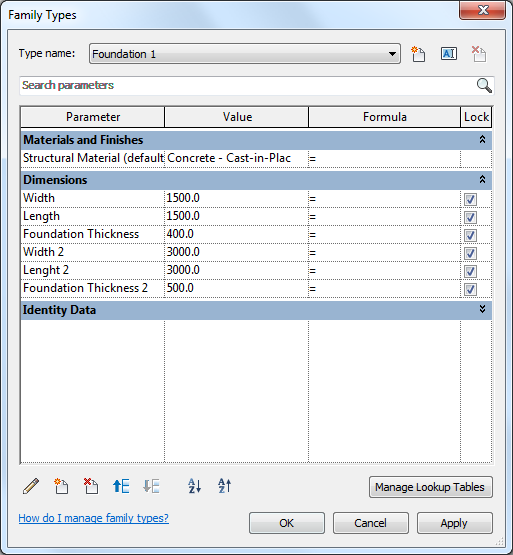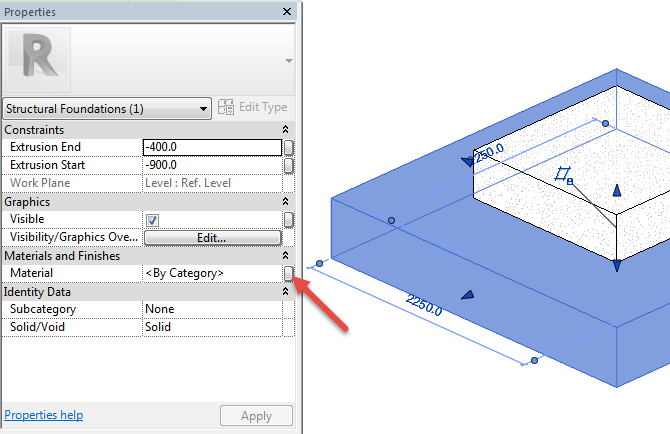
In the Revit content you can find a reach pallet of Structural Families preinstalled. In the Metric UK Library you can find the Structural Foundations folder which contains the number of different foundation types: a pad footing, a strip footing, a pile cap etc.

Recently my colleague asked me: “OK Tomek, I have all these families in that folder which is fine but what about a pad foundation which is stepped? I can’t find such family in the folder so how can I model it in Revit?”
Pad foundations are used to support an individual point load such as a structural column. They may be circular, square or rectangular. They usually consist of a block of uniform thickness, but they may be stepped or haunched if they are required to spread the structural load from a heavy column. Pad foundations are usually shallow, but deep pad foundations can also be used.
My colleague was right. The folder consists of the Footing-Rectangular.rfa family which is not a stepped one but this family can be easily adjusted by any Revit user, saved as the Stepped Footing-Rectangular.rfa and used in future projects.
Families are an integral part of working in Revit, and the key to creating custom content. Creating your own families is a great way to build a library of custom content.
In the next serious of steps I would like to show you how to create a stepped pad foundation.
Rather than start from scratch I am going to use the existing Footing-Rectangular.rfa family as my starting point.
1. Edit Family and open the Family Editor. The Family Editor is a tool to create new families or make changes to existing families.

2. Go to the Level and create additional reference planes. Reference planes give our family its structure and we will use the new ones to create a new foundation block.


3. Add dimensions to each group of reference planes. Two vertical and two horizontal. There should be an overall and a continuous string including the centerline in each direction.

4. Select each of the continuous strings and toggle on the Equality.

5. Select the new horizontal overall dimension. On the ribbon, next to the Label drop-down, click the small Create Parameter.

6. In the “Parameter Properties” dialog that appears, name the new parameter: Width 2, choose the Type radio button and click OK.

7. Repeat this for the vertical overall dimension and name the new parameter: Length 2.
8. With a good framework in place, it is time to add a solid form to the Family. On the Create tab, click the Extrusion.

9. On the Modify | Create Extrusion tab, on the Draw panel, click the Rectangle Snap to the intersection of two of the reference planes for the first corner, and then snap to the opposite intersection for the other corner.

10. It’s time to do a test of what we have done so far. When you test your flexible family, it is called “flexing” the model. On the ribbon, click the Family Types.

11. Input a different value for all the Width, Width 2, Depth and Depth 2 fields and then click the Apply button. The locations of the Reference Planes should adjust but stay equally spaced from the center. The block geometry should update accordingly.
12. Now it’s time to take care about the height of foundation. In the Front view, select the box. Drag the triangle shape handle grip at the bottom. Lock the top of the new box with the bottom of the existing one.

13. Add a new dimension.

14. Assign parameters to the newly created dimension (Foundation Thickness 2).

15. Go to the 3D view and flex it again. On the ribbon, click the Family Types Click Delete Type to remove one of the existing types. Click the Rename Type and call it: Foundation 1 and then click OK. Set up parameters to test your families.

16. If everything works properly it’s time to assign a material parameter. Select the block and click the Associate Family Parameter button and then select the Structural Material parameter and click OK.



17. Now you can save your family as Stepped-Footing-Rectangular.rfa and load into your project.

18. The rest is rebar detailing 

The post Stepped Reinforced Concrete Foundations in Revit appeared first on BIM and Beam.
from my Autodesk source Bim & Beam: BIM and Beam at http://blogs.autodesk.com/bim-and-beam/2017/01/12/stepped-foundations-in-revit/
via IFTTT

No comments:
Post a Comment